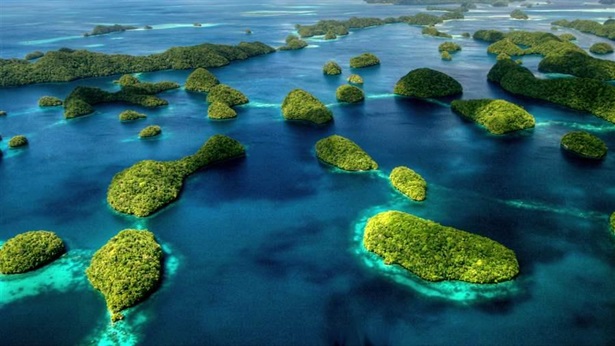In 2005, Pew began work to support creation of a highly protected marine reserve in the Northwestern Hawaiian Islands.
One year later, the George W. Bush administration designated the Papahānaumokuākea Marine National Monument, which at the time was the largest highly protected marine reserve in the world. The monument encompassed 139,818 square miles (362,127 square kilometers) of unspoiled reefs, atolls, shoals, islands, and banks.
The designation set a new standard with the principle that management of a large-scale protected area could recognize natural and cultural resources as intertwined. The scale of the Papahānaumokuākea monument helped to inspire an international movement to safeguard large swaths of ocean—particularly those surrounding islands where the culture and history are closely linked to those waters—and to create the world’s first generation of great parks in the sea.
To Hawaiians, Papahānaumokuākea means a sacred area from which all life springs. It is a place of honor, believed to be the root of native ancestral connections to the gods, and the site to which spirits return after death. The islands and the waters around them are home to more than 7,000 species, a quarter of which are found nowhere else on Earth. Some of these have only recently been discovered.
Native Hawaiians, with the help of Pew’s Global Ocean Legacy project, successfully advocated for the expansion of Papahānaumokuākea—creating the world’s largest permanently protected area on land or sea. President Barack Obama extended protections to include an additional 442,760 square miles (1.15 million square kilometers). The expansion helps ensure the long-term health of this vital marine ecosystem and the species that rely on it while also protecting ecosystems farther offshore. It builds resiliency against the effects of climate change and improves food security for Hawaiians.
The designation also adds a buffer of protection to ecosystems that include coral reefs, seamounts, pelagic zones, and organisms ranging from microscopic phytoplankton and zooplankton to seabirds, large tuna, sharks, sea turtles, and marine mammals. This will help the world achieve the global conservation targets recommended by scientists and help native Hawaiians preserve their traditional way of life.

